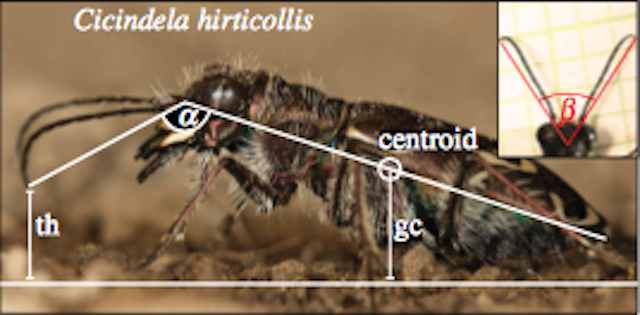by Benoit GILLES The trophic chains of ecosystems such as those found in small ponds are structured in several levels. The first group consists of the so-called primary organisms, constituting phytoplankton, producing their energy from minerals and light energy through the photosynthesis process. At the base of the food chain, these organisms serve as food…
Category: Entomo-Flash
Gyrostigma Rhinocerontis: His larva lives in the rhino’s stomach
by Benoit GILLES There are five species of rhinoceros, two in Africa: the White Rhinoceros (Ceratotherium simum) and the Black Rhinoceros (Diceros bicornis), and three in Asia: the Indian Rhinoceros (Rhinoceros unicornis), the Java Rhinoceros (Rhinoceros sondaicus) and the rhinoceros Sumatra (Dicerorhinus sumatrensis). These species are all in the process of degradation due to the…
Thyreophora cynophila : the unlikely return of the orange-headed fly!
Thyreophora cynophila Thyreophora cynophila had not been observed < 160 years ago than the orange head of a fly specimen ! This species of the family Piophilidae (photos below), described in 1798 by the botanist and entomologist G.W.F. Panzer (1755-1829), had last been observed near Paris in 1840. Its presence had previously been recorded in…
The incredible life cycle of Micromalthus debilis!
Micromalthus debilis, an Archostemate (smallest suborder of beetles – 50 species) of North American origin does not seem to have evolved for several tens of millions of years : it is the only known living representative of the Micromalthidae family. Although the species displays archaic morphological characters, its development cycle is both complex and singular,…
But where do the Ornebius of the Indian Ocean come from?
By Sylvain HUGEL The Mogoplistidae are a basal family of crickets, most of whose limbs are covered with flat, scaly bristles. None of them are capable of flying. A genus of Mogoplistidae is particularly diverse: the genus Ornebius which includes more than 100 species, mainly distributed in the Indo-Malaysian, Australian and Oceanian regions. Some species…
Duvalius abyssimus: a beetle of the depths
Post Views: 1,943 The ability of insects to colonize and adapt to extreme environments and inhospitable habitats is increasingly surprising. The discovery of a beetle
Scarabiasis: colic colos…
Post Views: 5,205 Entomology sometimes takes unexpected paths. This is what is defined as”scarabiasis” (or”canthariasis” from the Greek kantharos scarab and -iasis disease), a situation
3D insects glasses!
Post Views: 1,894 A large number of animal species have developed the ability to estimate and determine object distance and depth of field by combining
A speed that blinds!
Post Views: 1,566 One of the most universal needs of animals is to understand the environment in which they live to move in complex and
Cryoprotection: the art of surviving extreme cold
Post Views: 1,846 In the Arctic and subarctic regions, living organisms must, during winter, survive extreme temperatures sometimes reaching -60°C. There are two strategies for











